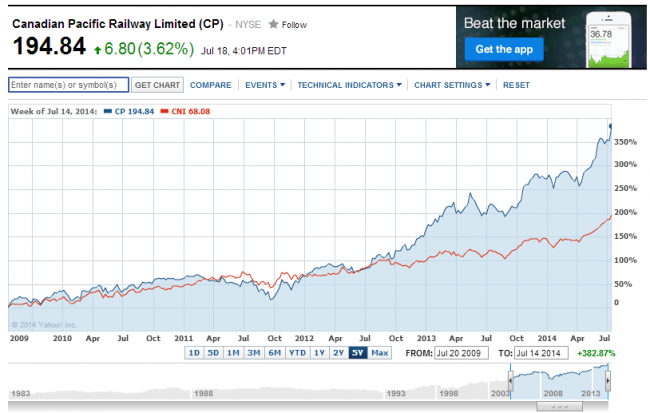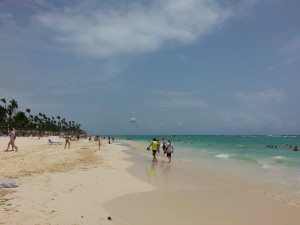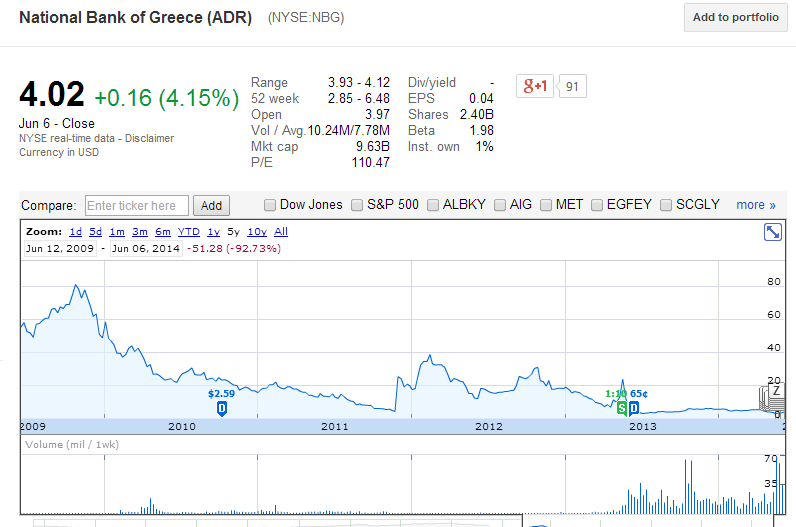The long-running battle between Argentina and some U.S. hedge funds took a turn for the worst yesterday when Argentina defaulted on its debt. Argentina has always been a basket case of economic and political mismanagement and hence this default is not a shock to most investors. Since the country is not a major economy at a global level the impact of this default on international equity and debt markets should be minimal and temporary.Eventually Argentina will work out some kind of deal with these holdouts and move on. It is unlikely that this default will trigger a major crisis like the European debt crisis or another recession.
From an article in Bloomberg on July 31, 2014:
With Standard & Poor’s saying Argentinais in default and last-minute plans to remedy the situation falling through, investor focus is turning to whether holders of $29 billion of bonds will demand immediate repayment.
The nation missed a deadline yesterday to pay $539 million in interest after two full days of negotiations in New York failed to produce an accord with creditors from its last default in 2001. A U.S. judge ruled that the payment couldn’t be made unless those investors, a group of hedge funds led by Elliott Management Corp., got the $1.5 billion they claimed.
Source: Argentina’s Default Clock Runs Out as Debt Talks Collapse, Bloomberg
Argentinian stocks have been extremely volatile recently and fell heavily after the default. But despite the fall, most Argentine ADRs are up by double digit percentages since the beginning of the year.
The following table shows the performance of Argentine exchange-listed ADRs year-to-date:
| S.No. | ADR Name | Ticker | Price as of July 31, 2014 | Year-to-date Change (%) |
|---|---|---|---|---|
| 1 | Edenor | EDN | $14.55 | 187.55% |
| 2 | Pampa Energia | PAM | $10.31 | 96.76% |
| 3 | BBVA Banco Frances | BFR | $12.90 | 85.34% |
| 4 | Banco Macro | BMA | $42.32 | 74.37% |
| 5 | Grupo Financiero Galicia | GGAL | $16.12 | 54.26% |
| 6 | Transportadora de Gas del Sur | TGS | $3.11 | 43.32% |
| 7 | IRSA Inversiones y Representaciones | IRS | $15.84 | 30.80% |
| 8 | Cresud | CRESY | $13.00 | 28.71% |
| 9 | Telecom Argentina | TEO | $21.89 | 26.97% |
| 10 | Petrobras Argentina S.A. | PZE | $6.73 | 21.26% |
| 11 | Nortel Invesora | NTL | $23.73 | 19.25% |
| 12 | YPF | YPF | $35.38 | 7.34% |
| 13 | Alto Palermo | APSA | $21.65 | 2.80% |
| 14 | Tenaris | TS | $42.97 | -1.65% |
| 15 | Ternium | TX | $26.60 | -15.02% |
Source: BNY Mellon
Financial institutions BBVA Banco Frances(BFR), Banco Macro(BMA) and Grupo Financiero Galicia(CGAL) are all up by over 50% YTD Banco Macro seems to be in a better position today than before with the bank reinstating dividend payments that was suspended a few years ago. last month the bank paid out a $1.25 dividend on its ADR.
Global X FTSE Argentina 20 ETF (ARGT), the country-specific ETF for Argentina is tiny with net assets of just over $11.0 million. As of July 30th, the fund is up by over 13% according to Yahoo Finance.
Disclosure: No Positions


